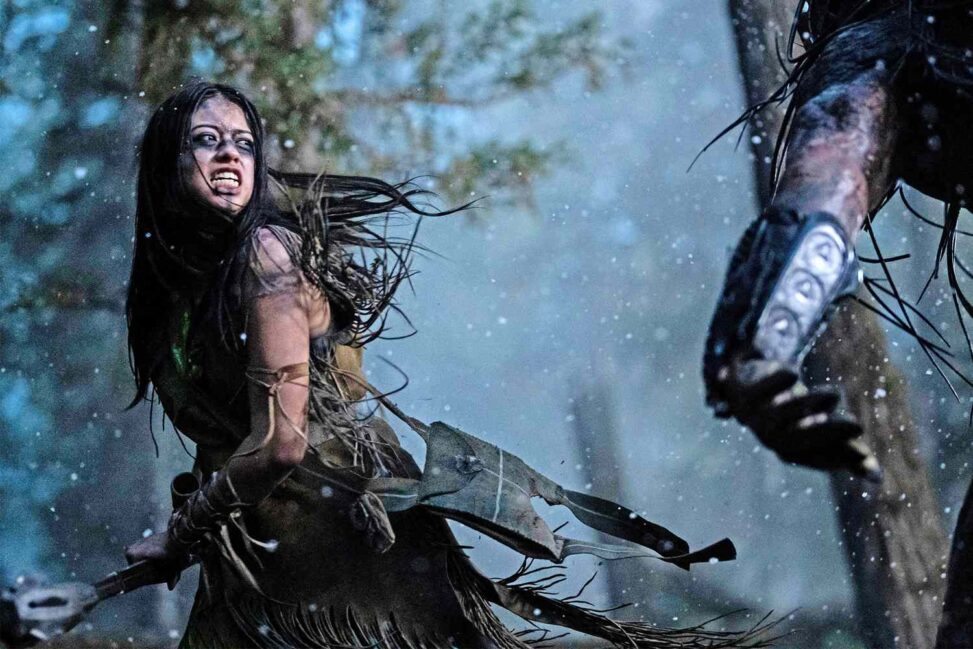Prey portrays hunting as a framework for power, survival, and resistance, contrasting Indigenous knowledge with alien trophy hunting. Hunting functions as survival, communal training, and existential contest. The Comanche practice emphasizes relational skill, patience, and respect for the land, while the Predator treats hunting as ritualized domination enabled by superior technology. Survival becomes an interplay between environmental awareness and adaptive cunning, and power is recast from force to the authority that comes from knowing how the world moves and responds.
Predator presents hypermasculinity that values conquest, trophies, and solitary prowess. The French fur trappers represent colonial extractive masculinity focusing on resource commodification and distance from the environment. The Comanche warriors perform an interdependent masculinity grounded in mentorship, accountability, and craft. The film subverts the action hero by privileging observational skill, improvisation, and communal knowledge over physical invulnerability; heroism is reframed as practiced competence.
The Predator’s cloaking and plasma weapons make it alienlike and dehumanize killing into sport. The trappers’ firearms and traps distance them from the living bodies they harvest, transforming animals into commodities. These parallels critique how technological mediation can amplify predation when detached from ethical engagement with land and kinship networks.
The film’s camera work actively shapes audience alignment and the film’s thematic contrasts. Handheld close-ups and POV framing draw viewers into Naru’s sensory process, making tracking a cognitive act rather than spectacle. Lateral tracking and stabilized wides depict the landscape as a social stage where communal practices unfold, giving scale and context to individual actions.
Naru challenges the conventional action hero by building competence through observation, mentorship, and iterative trial and error. She is not aware or hypermasculine; she learns, adapts, borrows tools, and leverages communal teaching. Indigenous identity is integrated into character construction through language, kinship dynamics, and cultural practice, avoiding flattening into token spirituality. The film centers her and locates her victories within culturally grounded methods, largely empowering the protagonist while still negotiating familiar Western narrative frames.
At 12:30 handheld close-up and POV framing the tight framing immerses viewers in Naru’s observational labor, making the discovery of tracks feel intimate and transforming evidence into narrative propulsion; the camera’s closeness models the ecological literacy the film valorizes. At 58:00 Tracking shot into chaos and quick cutting. The lateral tracking situates the tribe within the environment before rapid cuts highlight individual grief and resolve; the shift from measured movement to fractured editing marks the emotional and strategic turning point that pushes Naru from learner to actor. 01:34:00 Low-angle reveal and stabilized wide shot for the trap Alternating low-angle inserts amplify the Predator’s threat while the stabilized wide composes the trap as a product of communal intelligence; the visual pivot from looming verticality to horizontal orchestration underscores the film’s redefinition of power.
Prey reconceives hunting as a contest of knowledge and ethics rather than raw strength. Through character, thematic contrast, and deliberate camera strategies, the film shifts heroic value toward relational competence and cultural skill, allowing Naru to subvert traditional action paradigms and claim a grounded form of empowerment.

Provide Feedback